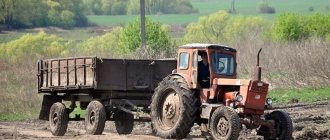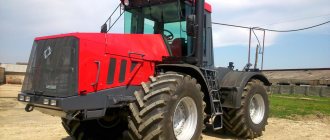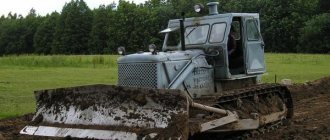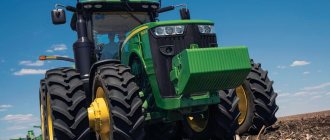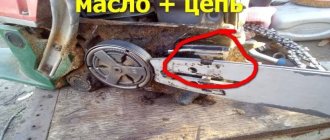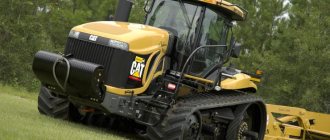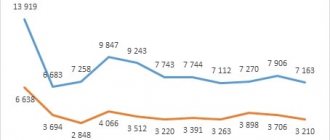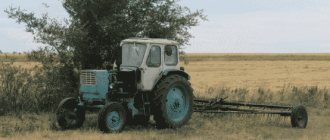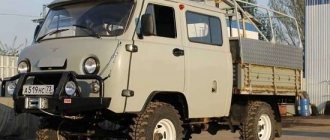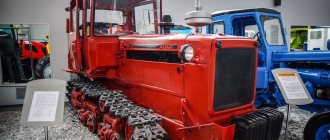The production of tractors is one of the important branches of Russian mechanical engineering. Domestic agricultural machines are actively replacing equipment from Belarus, the legendary YuMZ tractor, which is produced by a plant in the Dnieper, and also compete with American models. The advantage of Russian mechanical engineering is considered to be complete adaptation to regional agricultural conditions. In Russia, factories that produce tractors also offer consumers a full range of mounted and trailed equipment for machines.
Tractor models from Russian manufacturers
The largest production of tractor equipment dates back to the times of the USSR, when the products of domestic concerns were popular. However, after the economic crisis and the collapse of the state, foreign models were able to occupy an impressive market share.
At the moment, Russian tractor factories produce many modifications of equipment, which seems to be the optimal combination of affordable price and reliability.
Russian-made tractor models are in great demand because they are adapted to local operating conditions. They can operate on low-quality fuel without the risk of breakdown, and are characterized by increased cross-country ability and resistance to low temperatures. Tractor manufacturing in Russia continues its work, and having studied the model range, we can single out several of the most popular units. Among them:
This list is far from complete, since the model range produced by Russian factories is impressively wider, but these are the devices that are in the highest demand. It should be noted that Russian manufacturers often use foreign components, with the exception of some parts of the structure.
Produced by the Volgograd plant, the VT-100 is a modified tracked unit. It is equipped with a powerful diesel engine with a turbine, as well as a pneumatic compressor. It should be noted that despite the high power indicators, such tracked models are characterized by a low level of fuel consumption, due to which it is possible to reduce operating costs.
The Chelyabinsk plant produces the B-13 bulldozer , which seems to be the concern’s most modern solution. It is equipped with a YaMZ engine, and its reliable design guarantees correct operation even under the most difficult conditions. The unit complies with European standards, which is relatively rare among domestic products.
When considering wheeled devices, it is necessary to pay attention to the heavy tractor K 9000, produced by the Kirov Plant . It is a powerful tool for solving complex problems, as it is equipped with all-wheel drive and belongs to traction class 9. The carrying capacity of the device allows you to use additional equipment with a large weight, as well as transport cargo.
New units are also produced by the Ural plant, the most modern of which is rightfully considered the Uralets 200. This mini-tractor, as can be seen in the photo, is small in size and equipped with a 22 hp engine. It works easily off-road and is great for small farms.
There are many factories operating on the territory of the Russian Federation that produce modern modifications of equipment, which is why it is advisable to study the largest of them in more detail.
Rostselmash in Rostov-on-Don
The Rostselmash concern should be considered one of the undisputed leaders in the industry. It produces a wide range of devices, as well as additional equipment for cultivating agricultural land.
Rostselmash
A group of companies engaged in the production of agricultural machinery under the brands “Rostselmash” and “Versatile” is also known outside the country. The first model rolled off the assembly line of the Rostov plant in 1929. The company specializes in the production of combine harvesters, while supporting the production of a full range of agricultural machinery. The most popular model of Rostselmash was the SK-5 Niva grain harvester, which was developed in 1970, and 14 years later the millionth combine harvester of this modification was produced.
Since 2007, Rostselmash acquired the assets of the Canadian company Buhler Versatile. Under this brand, in 2012, Rostov residents launched two new models of tractors, C 3 and D 2, with a power of 575 hp.
In 2010, the assets of the American company Feterl Manufacturing Corp were purchased, which made it possible to significantly expand the range. At that time, the company produced 18 types of agricultural machines, the leaders among which were tractors and combines, as well as additional equipment for them.
Today Rostselmash produces grain and forage harvesters, tractors, forage harvesting equipment, self-propelled mowers, sowing, tillage and grain harvesting equipment, sprayers, and machines for road and municipal services.
Chelyabinsk Tractor Plant
Chelyabinsk Tractor Plant Uraltrak develops and produces wheeled and tracked road construction equipment. It was founded in 1929. The first models were created on the basis of the American Caterpillar 60. The domestic tracked vehicle “Stalinets-60” rolled off the assembly line in 1933. At that time, it was in Chelyabinsk that equipment capable of operating at low temperatures was produced: it took part in the “Snow March” expedition and covered 2 thousand km across Yakutia in 50-degree frost.
The company is considered the founder of the domestic diesel industry, because it was here that the Stalinets-65 tractor with a diesel engine was produced in 1937 and the production of fuel equipment for this type of machine was established.
Among Uraltrak's developments is the T-100M vehicle, on the basis of which 22 modifications were produced, adapted for work in different regions of the country, including swampy areas. The first heavy-duty energy-rich tractor T-800 for the development of rock and frozen rocks is also considered to be the brainchild of the company’s engineers. ChTZ also produced equipment marked T-130M, T-170, DET-250M2.
The modern range of products of the Chelyabinsk plant includes modifications of the DET-250M2, T-110M machines, the B-10M bulldozer, pipe layers, loaders, vibratory rollers, diesel engines and generator sets, a mini-model “Uralets” for farmsteads.
Also in Russia, the Kama Tractor Plant, group, Cheboksary, and the Altai Tractor enterprise, which develops forestry equipment, from St. Petersburg, specializing in the production of heavy equipment with an articulated frame, are engaged in the production of tractors.
“Made with us” and on Yandex.Zen
Not the last 20-30 years, but only the last 5 years. That's why I asked what year it was.
So that’s it)) Since you didn’t want to take an interest in the history of the region, I’ll do it myself
“Having received approval for his proposals, Belyaev demanded that the region increase the target for raising virgin soil. On his initiative, at the VII regional party conference held in January 1954, it was decided to expand the area under spring wheat by 2 million hectares in 1954-1955 instead of 1 million 200 thousand hectares according to previously announced proposals. The implementation of the tasks of plowing virgin soil required a large amount of agricultural equipment. During the first year of the virgin lands campaign, the number of tractors in the MTS of the Altai Territory increased from 29.6 to 44.3 thousand units. To provide the sharply increased amount of agricultural machinery with qualified personnel to the farms of the virgin regions, a large number of youth and Komsomol members were called up from other regions of the country. Thanks to the persistence and energy of Belyaev, who kept the party workers in constant tension, in 7 years 2,789.2 hectares of virgin soil and fallow lands were raised in the Altai Territory, of which 87.9% in the first two years. However, along with fertile virgin lands, at this time, under pressure from party bodies, farms plowed up large tracts of land that were unsuitable for growing grain crops. In 1955, such lands were removed from the arable land, but in subsequent years they were again plowed up and abandoned, as a result of which the reported figures for the development of virgin lands did not correspond to reality[8].
The erosion of virgin soils and the epidemic of weeds that intensified in the late 1950s and early 1960s, which were the result of erroneous approaches to virgin agriculture, significantly reduced the productivity of fields. In 1959-1963, the average annual amount of grain delivered to the state by collective and state farms decreased by 36% compared to the 1954-1958 period.
In the 70-80s of the twentieth century, there was a transition from separately operating enterprises and industries to the formation of territorial production complexes: agricultural-industrial hubs, production and production-scientific associations.[9] "link
Now I’ll decipher it. The devil is in the details)) Your aunt may have seen, when she came to a separate village in the Altai region, several abandoned broken tractors on, I specifically emphasize - on fields where there was severe soil erosion, i.e. on abandoned fields , an attempt to raise virgin soil on which failed. And it is not yet known how long they stood there). For you, this has turned into a hint with your liberoid (yes, excuse me, but such a conclusion suggests itself) thinking algorithms - to disposable tractors (the wording is really not yours, yours is just a hint) in the fields of the entire USSR
And just don’t say that there were abandoned tractors all over the fields of the USSR. Millions of tractors abandoned in the fields... Imagine and you immediately fainted, and disposable abandoned factories and disposable abandoned cities, what can you say. It’s true that our factories and cities were abandoned to die by fighters for your democratic happiness in the 90s
And the abandoned German tanks stood safely in the fields until our time, isn’t it the same logic?
Kirovets
The group produces the legendary Kirovets K-700 tractor, which became the founder of domestically produced agricultural machinery. Today, the main capacities are concentrated at the enterprise in St. Petersburg, which also has its own history, which began in 1924.
The modern assortment of Kirovets includes two main models of agricultural tractors: K-744, which is considered the successor to the legendary K-700 and is available in 9 modifications, and K-424, the successor to the Soviet T-150. Also, the engineers of the Kirov Plant Group of Companies developed two powerful agricultural tractors: Kirovets-K-7M with a load capacity of up to 9000 tons and a power of up to 428 hp. and Kirovets K-5 based on the main model K-525 Premium, which can lift up to 14,500 tons and develops power up to 250 hp.
Kirovets' product range includes industrial tractors, silage compactors, snow blowers, front-end loaders, wheeled bulldozers, and support carriers.
VTZ
Today, the Vladimir Tractor Plant does not produce tractors, but until 2022 this enterprise was part of the Tractor Plants machine-building concern and supplied compact agricultural machines to the market. Their small size combined with high productivity was appreciated by greenhouse and vineyard owners. The most popular models are VTZ-2048 and 2048A, VTZ-30SSh, VTZ-2032 and 2032A, VTZ-2027.
The plant opened during the Second World War and until 1955 provided almost all agricultural enterprises in the country with equipment. Wheeled vehicles “Universal”, DT-24, “Vladimirets” T-28, as well as equipment of the T-25 and T-25A series worked in the fields. The developments of Vladimir engineers were indispensable for farmers, thanks to whom they mastered the production of the air-cooled D-30 engine. Since 1962, the four-cylinder D-37M engine was produced for the first time in the USSR.
In 1988, the millionth tractor rolled off the assembly line; in 2012, together with the Finnish company Sampo-Roseniew, grain harvesters were produced at the VTZ base. In 2022, due to the difficult financial situation, production was stopped.
VgTZ
The Volgograd Tractor Plant was built back in the late 20s of the 20th century during the era of accelerated industrialization. Today it is part of the Russian machine-building concern Tractor Plants. The main products are Agromash tracked vehicles, the most popular of which is the 90TG model, as well as DT-75 tractors and bulldozers.
The Volgograd Tractor Plant produces crawler tractors and bulldozers of 3-6 traction class, bulldozer blades, attachments and removable equipment for machines. The advantage of VgTZ products is ergonomic tracked models with increased productivity.

